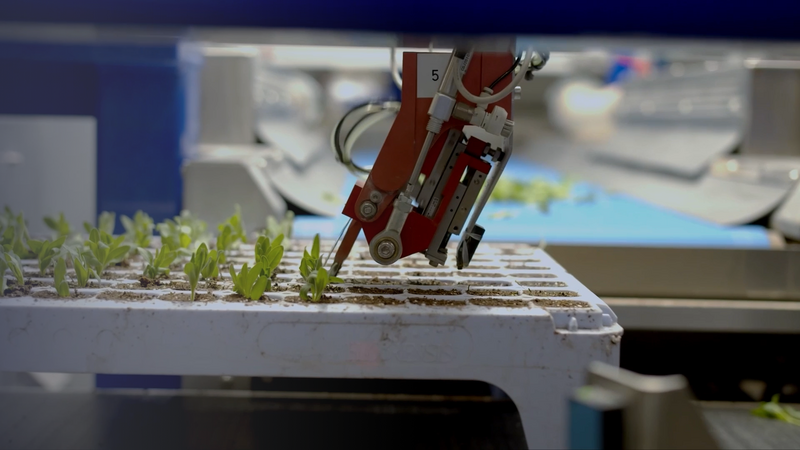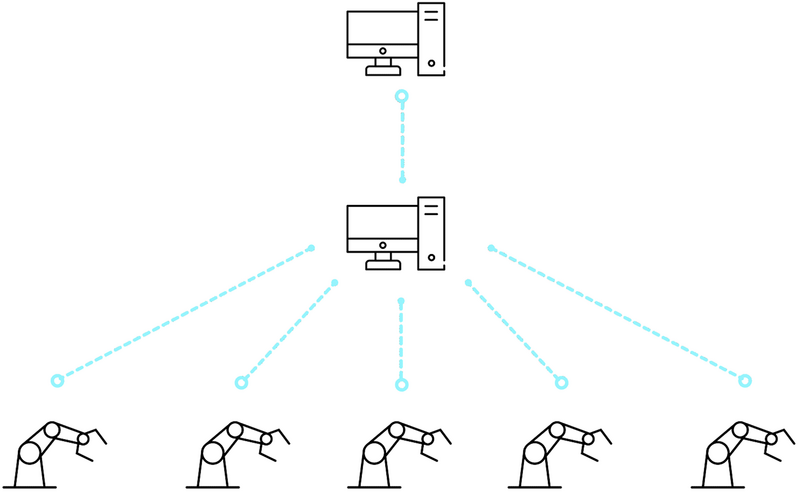
Robotic 2D Grading and Picking
Customizable AI for 2D Grading and Picking Across Industries
Grading and handling products on production lines present a persistent challenge: endless variability. Traditional vision systems struggle with variations in shape, size, color, and background. Inconsistent quality means reduced throughput and extensive manual configuration. But with the Robovision AI Platform, you can
- Identify and sort products based on size, shape, and condition.
- Use advanced detection and classification algorithms to evaluate type and quality of products on a moving conveyor.
- Instruct picking machinery on how to pick an item and how to sort it.

Grade on greatness, pick at perfection with next-gen automation
The Robovision AI Platform understands variability, advancing automated quality assessment and object handling through AI-driven metrology and grading using 2D, 3D, and diverse spectrum imaging. Robovision's grading and picking solution is designed for high-precision applications across food processing, logistics, and agricultural workflows.

Localize and Identify
The AI model predicts both the contours and class of each individual item based on the user’s labeled examples (even if items are touching or slightly overlapping).

Measure and Position
The system optimizes automated picking by analyzing object dimensions to determine the ideal picking pose using center of mass and orientation. Area, width, and length are available for grading and pose optimization.

Refine and Improve
Retraining is simple, with one-click auto-generated masks using foundation model predictions. Use custom dashboards to track performance and retrain at the optimal time for maximum accuracy.
Real-World Applications: Next-Level Grading and Picking
Sorting and Picking Produce on a Conveyor
Accurately identify and sort delicate fruits or vegetables based on size, shape, and condition. The model uses advanced detection and classification algorithms to evaluate the fruit’s type, quality, or ripeness as it moves along the conveyor. It then communicates to picking machinery which ones to bin or remove.
In an automated peach processing facility, peaches are graded and sorted using Robovision's AI platform. Systems can be developed to automatically divert good fruits to a packaging station, while overripe or damaged ones are removed.

Picking and Placing Items into Packaging
Inform machinery of the precise placement of items into packaging by accurately identifying their orientation, dimensions, and shape. Efficient handling, even for irregularly shaped items, ensures optimal placement within the packaging and reduces the risk of damage.
In a bakery production line, for example, triangular-shaped pastries are picked and placed into square-shaped boxes. Pastry placement is optimized to maximize space and prevent damage.

Grading and Planting Cuttings and Microplants
Precisely grade and plant bulbs, cuttings, or microplants by assessing their size, health, or root structure. Advanced AI algorithms evaluate plant quality and determine optimal picking positions, then communicate with planting machinery to ensure optimized spacing and positioning in trays or soil.
AI vision analyzes tulip bulbs for uniformity and health, directing automated planters to select only viable ones. The bulbs are positioned at the optimal orientation for growth before being planted in growing trays.

Scalable Reliability, Smooth Integration
Streamlined Connectivity
Connect the camera directly to the machine and upload parameter files to configure it according to specific needs. The system delivers results in metric units, aligned with the conveyor’s coordinate system—no further processing needed.
Integrate Vision AI outputs into a robot controller, PLC, HMI, or data management system using industrial communication protocols, streamlining the flow of data between systems. External dashboards can be created and customized to visualize results in real time for enhanced operational insights.
Camera Inference Integration
Direct camera interfacing enables smooth synchronization of multiple cameras and reduces latency across the vision pipeline. Translate images into precise, on-the-spot robotic action.
Utilizing Robovision’s pre-built vision AI solution minimizes the engineering investment needed to keep up with evolving technology standards. Teams can direct internal resources toward higher-value areas, optimizing business efficiency and innovation.

Customize and Scale
With an award-winning interface, domain experts can manage and optimize models directly, ensuring ongoing improvement without specialized AI knowledge. This flexibility allows for complex, customized deployments and accelerates scaling across diverse use cases and products.
Organize Model Management
Master models can be managed centrally, and then deployed across multiple locations for consistency. Perform real-time AI inference directly at the production machine, enabling edge-based decision-making without needing continuous connectivity.
This approach ensures models stay adaptable and scalable as production evolves, all while simplifying the process for domain experts who can adjust and optimize on-site.

Robovision in Action: Success Stories

System integration partner QING used Robovision's AI platform to automate its customer's quality control.
View success story

Computer Vision AI integrated into a tulip planter machine
View success story
See how the robot trims rose cuttings from a branch and pots them in one operation.
View success story
PackCheck integrates AI platform to improve and scale quality inspection in food and packaging
View success story